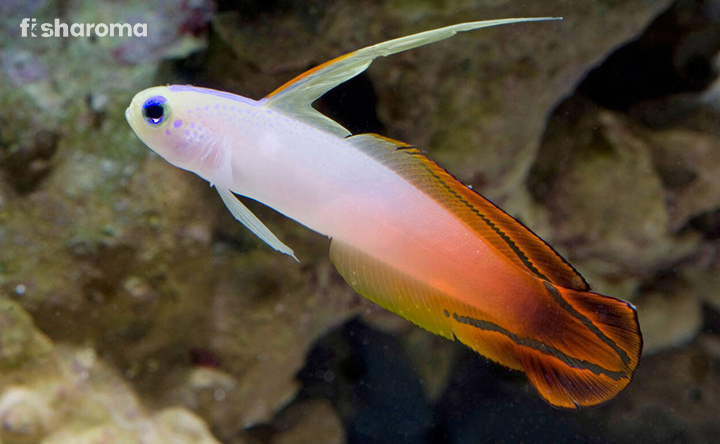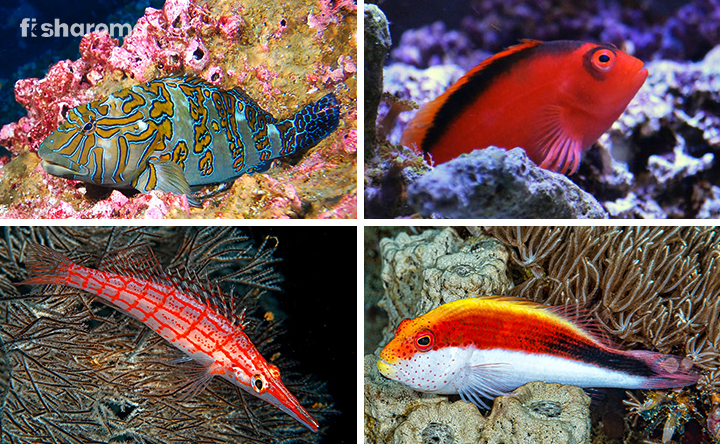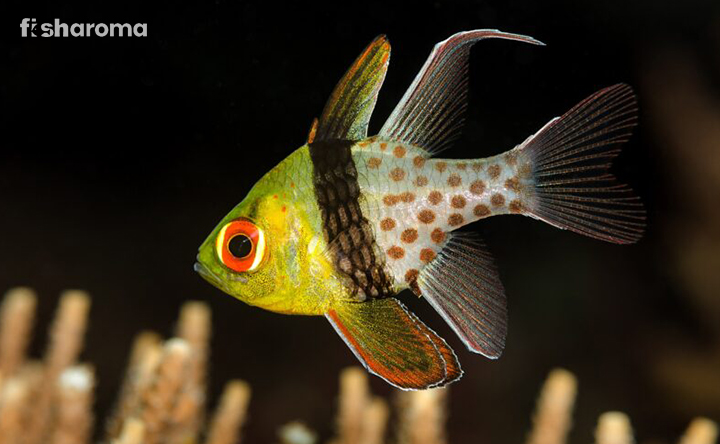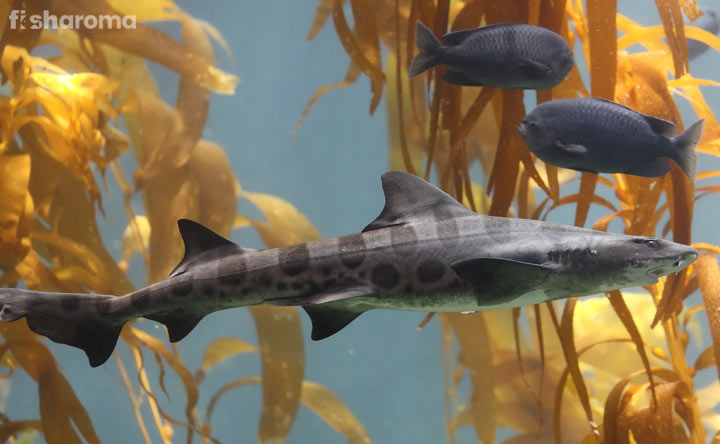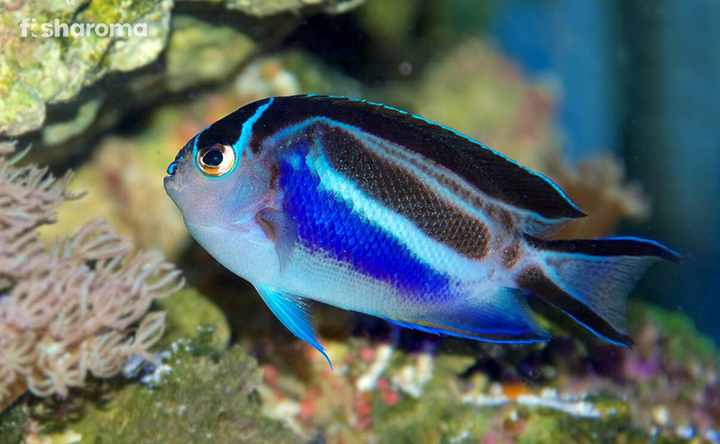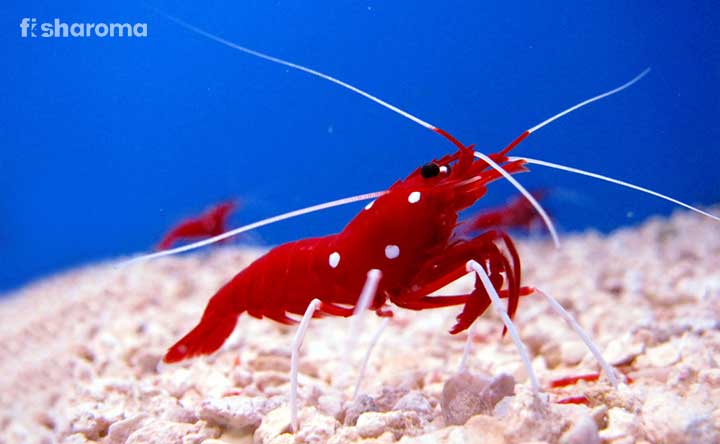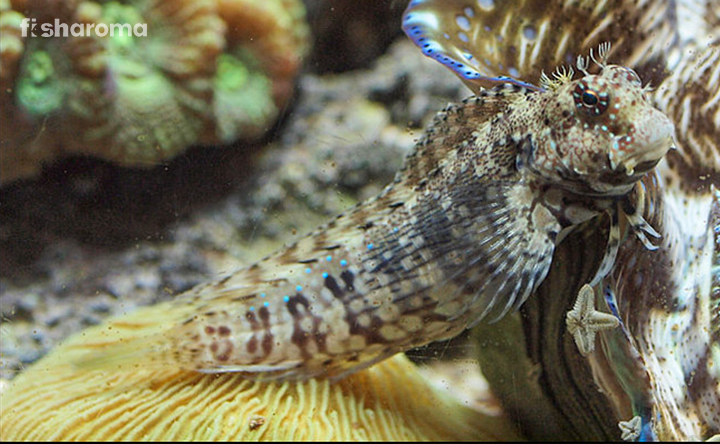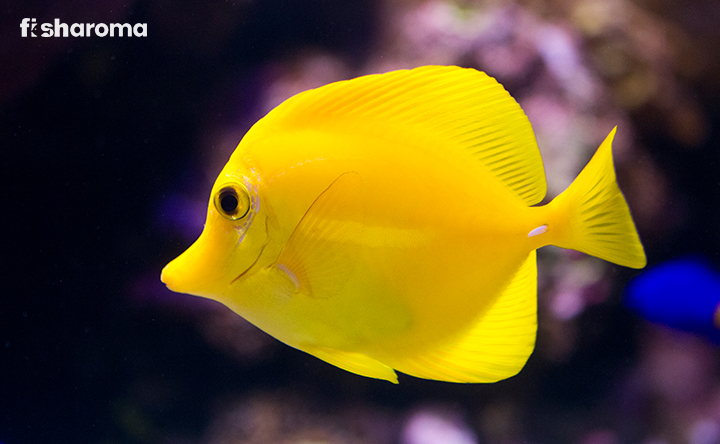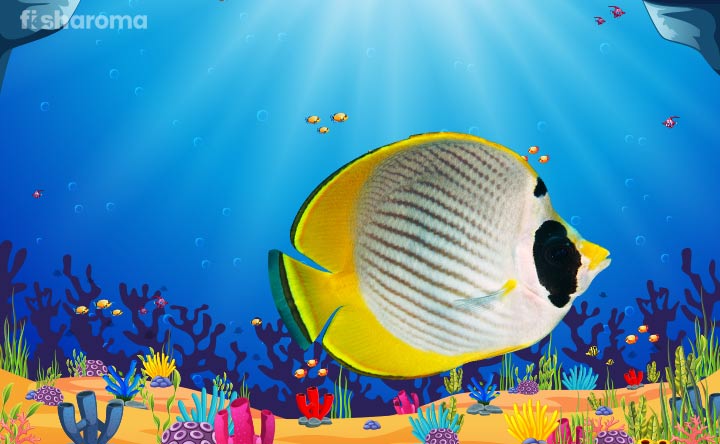Complete Care Guide of Clownfish – The Most Lively Clown of Saltwater
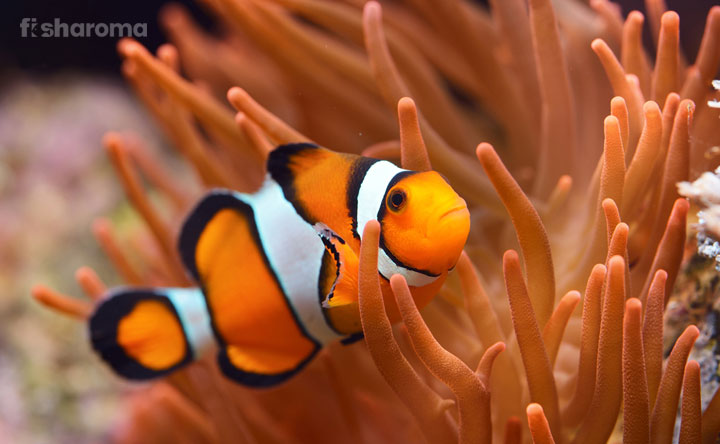
Let’s admit it! After watching Finding Nemo, we all wanted the cute, little, playful Nemo or Clownfish in our aquarium, and that movie is a valid reason for owning an aquarium with Nemo or with other species. Well, it comes with an easy level of care, so petting it and experience a slice of the movie itself in your aquarium will not be a problem at all.
If the care tips of Clownfish made you bothered to pet such a lively saltwater fish, let us it clear how easy its caring is! Take a look at its detailed care guide here.
Key Specifications of Clownfish
But before shedding light on the core caring guide of Clownfish, let’s take a closer look at its key specifications.
| Scientific Name | Amphiprioninae |
| Family | Pomacentridae |
| Origin | Indian Ocean, Pacific Ocean, and Oceania |
| Size | 4” (10.16 cm) |
| Color | Orange body with white stripes and black borders |
| Care Level | Easy |
| Lifespan | 6 years |
| Temperament | Peaceful |
| Compatibility | Large |
| Tank Size | Minimum a 50-gallon tank |
| Diet | Omnivorous |
Overview
The main reason behind the popularity of this fish, of course, the Disney movie called Finding Nemo, where Nemo’s intelligence won millions of hearts.
But this fish has some specific traits like a diverse diet, an outstanding communication style, and playful movements, which are also the reasons behind its popularity among the marine tank owners. So if you too want to see some more colors in your reef tank, you have to include Clownfish there.
And for all the caring tips, we are here to guide you in the right way. Just go through the sections below and learn about the least requirements of this fish and get ready to bring a pair for your home aquarium.
Origin and Habitat of Clownfish
Clownfish originally belong from the indo-pacific ocean. It is available in a large number in the eastern parts of the Indian Ocean near Thailand, Malaysia, the Philippines, and Indonesia. In the north of Taiwan and the Ryukyu Islands, this fish is available in a vast number.
In the West Pacific Ocean, or to be more specific, from North-West Australia towards Singapore, anyone can see this fish swim around.
Shallow lagoons and coral reefs are the favorite places of this fish. However, extreme deep or shallow water is not their preference because extreme shallow water means higher temperature, and extreme deep means higher salinity.
Appearance of Clownfish
It has a long body, and its dorsal fin is quite thick towards the edges. In False Percula Clownfish, you can find 11 spines, and Percula Clownfish has 10. the caudal fin of this fish is rounded. Among various types of Clownfish, these two are the most popular ones.
Interestingly, you will not be able to understand the gender differences in Clownfish at a young age. During their growth, their hormones keep changing, and they become male or female and form a pair at the time of breeding.
Size of Clownfish
Clownfish grow nearly 4” (10.06 cm), and it will be the ultimate delight to see this small species doing up and down in the aquarium.
Color of Clownfish
The most popular types of Clownfish are generally called the Orange Clownfish, and from this name, you must have understood their color. Behind their gills, if you look closely, you can find out 3 white stripes with a thin outline of black. This outlines make the stripes more visible and make the species livelier during its movement.
Apart from orange, you can find yellow, red, maroon, pink and so many colors in this fish.
Types of Clownfish
Well, there are near about 30 types of Clownfish, but two of them named Ocellaris Clownfish or False Percula Clownfish, and Percula Clownfish are the two most popular types for the home aquariums.
Apart from these two, other popular types are
- Tomato Clownfish
- Maroon Clownfish
- Red and Black Clownfish
- Pink Shunk Clownfish
- Orange Shunk Clownfish
- Red Sea Clownfish
- Saddleback Clownfish
- Australian Clownfish
- Sebae Clownfish
Behavior of Clownfish
This fish is not a good swimmer at all because of the rounded structure of their caudal fin. They are not good at swimming, and they are very slow-movers as well. They are always in need of hiding places and food.
They remain peaceful throughout, and in the aquarium, they prefer to stay at higher levels. Most of them prefer to choose a place that has a low level of current in the aquarium.
Young species of Clownfish stay in a safe zone in the bottom until they are fully grown up. They are very particular about this place, and they don’t eat from any other places.
Lifespan of Clownfish
It lives approximately for 6 years, but it can live much longer (8-10 years) if you provide proper care to this fish.
Take a look at its diet, tank set up, and water parameters, which will help you to provide a longer life to them.
Diet of Clownfish
It is an omnivorous fish that lives on a diverse diet, which makes them popular instantly. You can feed any store-bought fish food (flakes or pellets) to your cute buddy.
In the wild, they are used to live on meaty foods – they readily eat small crustaceans, fish eggs, copepods, larvae, anemone tentacles, and so on.
You can try to replicate that in your aquarium by feeding the fish with chopped Brine Shrimps and Mysis. The store-bought food will supply the algae protein to the fish. As it is an omnivorous species, veggie and meaty food both are needed, and you have to balance it smartly.
Food quantity and Feeding Frequency
As this fish is small, drop such a quantity that it can consume in 3 minutes. Do not overfeed that fish, which may be dangerous for them.
Now, moving on to feeding frequency, feed the adults twice a day and juveniles trice or four times a day for their better health.
Choose an area where the water flow is very slow so that the Clownfish do not have any difficulty at the time of eating to fetch the food.
Tank Requirements of Clownfish
Now learn the tank requirements of this fish to provide a healthy home just like nature to them:
Tank Size
You need to get a minimum of 50-gallon tank for a Clownfish. A single fish can stay comfortably in a 20-gallon tank too, but if you want to keep a few pairs, you will need larger tanks, and in case you have planned to set a community tank with anemones, much larger tank will be required.
Substrate
You can use any substrate, but sand will be the best option to replicate their natural habitat. Experts often said that a substrate-free tank would also be alright for this fish, but if it’s a community tank, the substrate may be mandatory for the tank mates. So choose accordingly!
Aquarium décor
Using rocks, live rocks, reefs, and fake reefs will be very pleasing for this fish, and it will be an aesthetic delight for the viewers too. Don’t forget to make hiding places for this fish. Also, beware that the swimming place for the fish remains sufficient even after placing all these decors.
Aquarium Filter
An excellent quality filter, along with a protein skimmer, is required for this fish. Actually, a stable environment and good quality water are mandatory, and filtration will enable exactly these.
Aquarium Light
If it is a fish only tank, you will hardly need intense lighting for your fish. Again if you are keeping anemones, strong lights like metal halides will be required for their growth. If you are keeping only the Clownfish, any decent LED lights will be alright. In general, it does not have any specific lighting requirements.
Water Type for Clownfish
This fish is a bit sensitive to its water requirements, so be sure to check the water type before putting this fish.
Temperature, pH Level and Gravity
74-79°F (23.3-26.1°C) will be the ideal temperature for Clownfish with a pH of 7.8 – 8.4. Along with this, 1.023-1.025 SG gravity is acceptably good for this fish. Do check these parameters every week.
Cleaning
Just like any other fish, it will be necessary to remove the excess food particles or fish wastes to reduce the level of nitrite/nitrate/ammonia. You are free to use algae scrapers to clean up the algae, but any types of chemical use are harmful here.
Water Change
There are different water changing guidelines for fish only and reef tanks. Check the following:
Fish only tank
15% water change twice a week is needed if it’s a small tank of a 40-gallon and you cannot skip this, in case you want this fish to stay longer. For smaller tanks, replace 5% water each week, and for a 90-gallon tank, a 20-30% water change in a month will be alright.
If you have 100-gallon or larger tanks, 20-30% water change after 6 weeks is acceptable. Also, it is required to replace the filters after a specific time.
Reef tank
5% water change each week for the small tanks of 40-gallon, 15% water change twice a week for the mid-sized (90-gallon) tanks, and 10% water change twice a week for larger tanks of 100-gallon and up are mandatory.
Compatibility of Clownfish
If you are planning to put various types of Clownfish, they may turn aggressive to each other. It will be better to keep one or two pairs of Clownfish of the same type to be on the safe side. This fish is suitable for a community tank too. Continue reading to learn about it.
Suitable Tank Mates of Clownfish
In general, Clownfish is not very choosy in their natural habitat, and they are quite adaptable with lots of other species. The species which live at a different level of water will not be harmful to them. Similarly, the small fish, too, can live in coordination with clownfish.
So, if you are planning to set a community tank with this, you will get various options like:
- Damselfish
- Wrasse
- Dartfish
- Hawkfish
- Butterflyfish
- Blenny
- Puffer
- Goby
- Harlequin Shrimp
- Peppermint Shrimp
- Snail
- Starfish
- Crab
Clownfish and Sea Anemones
As they are slow swimmers, they are seen to stick to the anemones for safety in the wild! Yes, Anemones which are avoided by most of the marine creatures for safety reason. Clownfish and Anemones (a few species of both) are found in a symbiotic relationship in nature – they help each other.
Territorial Clownfish supplies nutrients to anemones by fighting back the dangerous species. At the same time, by producing mucus and becoming resistant to toxins, they can stay safe from the stinging and poisonous tentacles of anemones. Anemones protect this fish from the current from rocks or corals. They stay safe from predators, too, due to this. But it is hard to see in the aquarium.
Apart from the compatible tank mates, you can keep a few types of anemones to stay with this fish peacefully, but you probably miss the chemistry between them that you can see in nature.
Bubble Tip Anemone, Magnificent Anemone, Giant Carpet Anemone, and Saddle Carpet Anemone are some of them.
Unsuitable Tank Mates of Clownfish
Any large or aggressive fish will be considered as a threat to this cute, little fish, and you cannot keep then along. The following are to name a few as the unsuitable tank mates of Clownfish:
- Angelfish
- Tangs
- Groupers
- Eel
- Lionfish
- Triggerfish
Clownfish are the food of these species, so either they will eat your cute buddy, or they will cause much stress in it. So, skip these!
Breeding of Clownfish
Percula Clownfish is seen to breed successfully in captivity, and you will have to set the temperature at 83°F to allow them to spawn. The wooing continues for 5 days, and at this stage, you can see the fish in different poses.
If you put Clownfish with Anemone, you will find the eggs are laid under the cleaned rocks near anemone.
Near about 50-500 eggs are produced each month, which hatch after 8 days. Right after hatching, they start swimming slowly at the bottom level of the aquarium for 15 days, and gradually they find a suitable home in anemones.
As sex detection of the fish is a bit difficult, breeding becomes more difficult, but it is not that impossible.
Common Diseases of Clownfish
Aquarium bred Clownfish are very hardy, but the wild-caught ones are less hardy as they have some immunity issues from the beginning. If you are planning to get one, go for a captive-bred one.
Marine Ich, Fin Rot, and Dropsy are the commonest diseases of this species, and you can look for the following signs in the fish to detect these diseases:
- Disintegrating fins
- Edge of the fins reddened
- Cysts in gills, fins, and whole body
- Breathing issues
- Pale skin
- Lack of appetite
It’s not hard to cure the cute Clownfish of these diseases simply by maintaining water parameters and by applying parasite remedy.
Discoloration and lack of appetite can occur due to stress too in this fish, and you need to observe for the abnormalities to understand these. In case you find out any sign of illness in the fish, it’s highly recommended to get an expert’s guidance without taking advice from Google.
Summary
So the final thought is Nemo, in real life, is as spontaneous as it is portrayed in the movie. Its least requirement regarding food, aquarium water, and tank maintenance is the reason behind its suitability as a member of your home aquarium.
And it will be a pleasure to find Nemo in your saltwater aquarium doing sporty stuff. So it will be a big YES to keep it in your tank even though you are a beginner with a saltwater tank or just starting as an aquarist. It does not matter whether your tank is small or large to keep a Clownfish, so pet this lively species and make your aquarium aesthetically pleasing.
Interesting Facts about Clownfish
- If you are lucky and good observer enough, you may see Clownfish interact using smart gestures.
- They are born without sex, or to be specific, they are male since birth.
- You can actually feed this fish with your hands.
Some More Unique Saltwater Fish:
If you are interested in this cute looking clown of freshwater, the Following saltwater fish too may interest you:
- Green Chromis – A dazzling saltwater beauty that shines like an emerald in your aquarium. Green Chromis will make your aquarium more eye-catchy, and that’s for sure. Find its caring tips here.
- Royal Gramma – A colorful saltwater fish with a royal look is all you need to convert your simple aquarium into a centerpiece. Pet Royal Gramma and take help from these caring tips.
- Cat Shark – It is a shark of saltwater that actually has an appearance like the sea Sharks. With the caring tips, you can now have the experience of petting a shark with Cat Shark.

